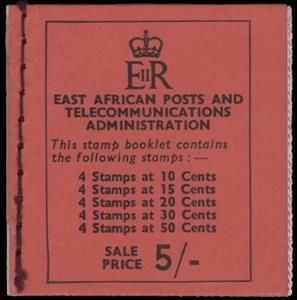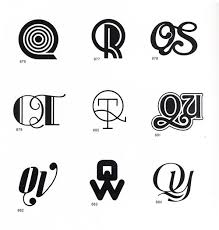Booklet: East African Posts and Telecommunications Administration (British East Africa (Kenya, Uganda and Tanganyika) 1961)
East African Posts and Telecommunications Administration (British East Africa (Kenya, Uganda and Tanganyika) 1961)
01 February (British East Africa (Kenya, Uganda and Tanganyika) ) within release Flora, Fauna & Landscapes goes into circulation Booklet East African Posts and Telecommunications Administration face value 5 East African shilling
| Booklet East African Posts and Telecommunications Administration in catalogues | |
|---|---|
| Stanley Gibbons: | Sg: EA SB9 |
Booklet is square format.
Stitched booklet containing - 1 pane of 4 x 10c stamps (SG 184) - 1 pane of 4 x 15c stamps (SG 185) - 1 pane of 4 x 20c stamps (SG 186) - 1 pane of 4 x 30c stamps (SG 188) - 1 pane of 4 x 50c stamps (SG 190) Exists stitched at left or rightAlso in the issue Flora, Fauna & Landscapes:
- Booklet Pane - Coffee bush face value 4*15;
- Booklet Pane - Cotton face value 4*10;
- Booklet Pane - Gnu (Connochaetes sp.) face value 4*20;
- Booklet Pane - Thomson's Gazelle (Gazella thomsoni) face value 4*30;
- Booklet Pane - Zebra (Equus sp.) face value 4*50;
- Booklet - East African Posts and Telecommunications Administration face value 5;
Booklet East African Posts and Telecommunications Administration it reflects the thematic directions:
In British heraldry, a coronet is any crown whose bearer is less than sovereign or royal in rank, irrespective of the crown's appearance. In other languages, this distinction is not made, and usually the same word for crown is used irrespective of rank (German: Krone, Dutch: Kroon, Swedish: Krona, French: Couronne, etc.) In this use, the English coronet is a purely technical term for all heraldic images of crowns not used by a sovereign, and implies nothing about the actual shape of the crown depicted. A Coronet is another type of crown, but is reserved for the lower ranks of nobility like Marquesses and Marchionesses, Earls and Countesses, Barons and Baronesses, and some Lords and Ladies. The specific design and attributes of the crown or coronet signifies the hierarchy and ranking of its owner.
A monogram is a motif made by overlapping or combining two or more letters or other graphemes to form one symbol. Monograms are often made by combining the initials of an individual or a company, used as recognizable symbols or logos. A series of uncombined initials is properly referred to as a cypher (e.g. a royal cypher) and is not a monogram.


